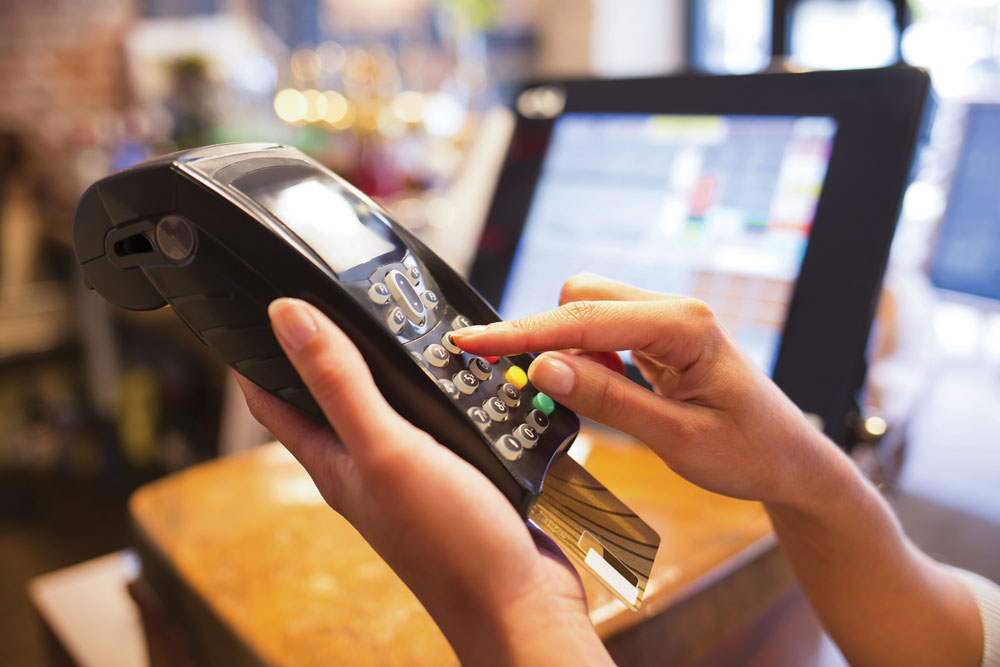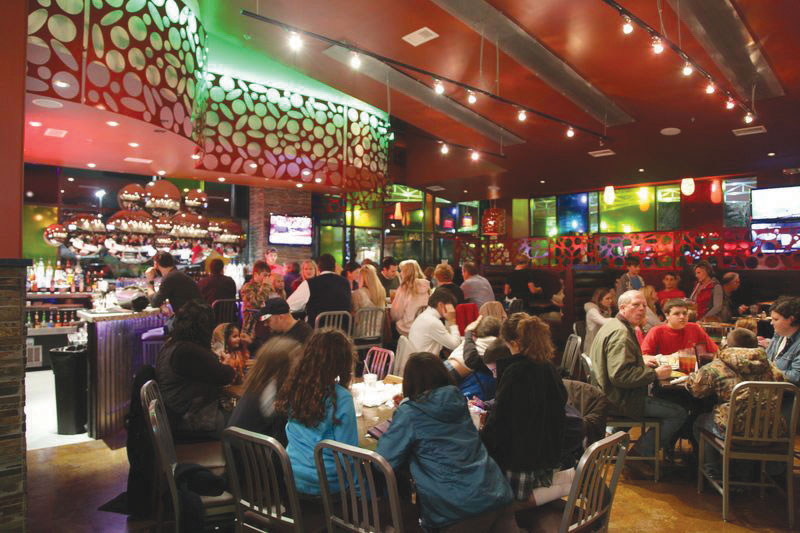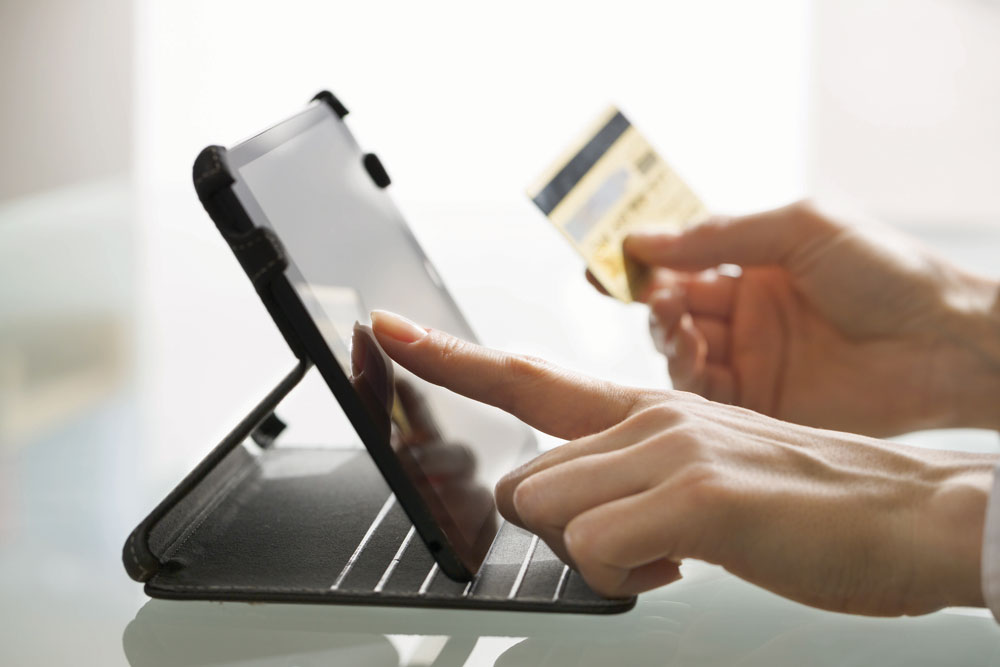Gone are the days of purchasing a POS system without fully tapping into its enormous potential. Not only do today’s POS systems perform so many crucial tasks—managing loyalty programs, facilitating seamless delivery and enabling online ordering, among others—but new additions to these systems can take your business to the next level. Now this vital piece of equipment can act as a springboard for targeted marketing, mobile ordering, pay-at-the-table capabilities and much more. “Everything needs to be integrated with the POS,” says Aaron Fang, director of business development for MenuDrive in Carlisle, Pennsylvania. “The POS is the data hub, but the information that’s stored there can now be exported to vendors who take that information and act on it.”
Recent tech-savvy innovations within POS systems, as well as the ability to augment, upgrade and sync with those systems, have created a perfect storm of peak performance. “There has been a mentality shift from operators when it comes to POS,” notes Matt Wise, CEO of HelloWorld in Pleasant Ridge, Michigan. “Instead of relying on software that can quickly become outdated, different applications can be added, and they can communicate with each other.”
In short, POS trends are poised to change the future for pizzeria operators—and their customers—for the better. We talked to a number of experts about how today’s POS systems are becoming supercharged.
Upward Mobility
According to Mobey Forum, a global industry association that focuses on mobile financial services, mobile POS terminals are projected to reach 46% market penetration by 2017, up from the 17% share held in 2012—and pizzeria chains are catching on. Atlanta-headquartered Mellow Mushroom (mellowmushroom.com), with 160-plus locations across the country, currently uses a traditional mounted system, but POS administrator Will Nash says he is mulling the possibilities of a mobile POS system, which would allow servers to tote tablets around the pizzeria and key in orders tableside.
At the other end of the transaction, more customers want to pay through their mobile devices, Fang says. “We’re seeing mobile payment solutions becoming popular,” he notes. “Pizzerias are starting to adopt mobile payments through an app to facilitate greater in-store and takeout payment convenience and drive loyalty programs.”
Indeed, most experts are predicting a move toward systems that integrate with a POS to enable customers to pay at the table, making time-consuming close-outs a thing of the past. “In some cases, this program is already embedded in a POS system as sold, but if not, it can be remotely installed and up and running in five or 10 minutes,” explains Ben Carolan, executive VP of sales and merchant acquisitions for TabbedOut in Austin, Texas. “Customers then download an app, create a profile, and store their credit card data. When the customer comes to the pizzeria, he hits ‘open tab’ on his phone and orders from the server, who can see the customer’s name on the POS and what credit card is being used.”
Customers, meanwhile, can track their orders on their phones and pay at the end of the meal. The systems even let your guests split the check according to menu item, fraction or dollar amount and add a gratuity. An email receipt is sent to the customer, and the app tracks purchases so that the customer can review food or drink items ordered in the past.
A system like this also allows the pizzeria operator to use back-end marketing analytics to track any customer’s number of visits, average ticket, personal preferences and more. Meanwhile, the customer can provide feedback after the meal (in TabbedOut’s case, simply a thumbs up or down, plus space for comments), which is then sent directly to management staff in real time through a mobile phone alert.
Finally, the customer enjoys peace of mind because his credit card info is encrypted in his phone, so he doesn’t need to give his card to staff members, thus protecting both customers and businesses from fraud.
Wise believes mobile processing is quickly gaining ground in restaurants, and he predicts a dramatic shift over the next three years. Mellow Mushroom is already priming its POS for payment at the table. “We’re working on an app that will tie in with our loyalty program and allow mobile payment from phones,” Nash says. “This will allow guests to load their credit card data, scan the check and pay. And it allows us to look at all data from the visit (the time, table number, server, items ordered, etc.) and get a better understanding of our guests [so that we can] ultimately serve them better.”
 |
|
Mellow Mushroom execs currently use a traditional mounted POS but are considering the possibilities of a mobile system. |
Hitting the Target
Open APIs (application programming interfaces) allow different technologies to work together, which can be especially helpful for marketing with your POS data. “With open APIs, you open communication to another provider,” Wise says. “So you can text a coupon offer, for example, and enter that code in the POS system, and another company validates and clears the coupon, communicates back to the customer, and disables the coupon so it can’t be used again.” Another example: When a customer registers for perks such as a loyalty program or sweepstakes offers, he can be later messaged by text or push notifications to visit the pizzeria when he’s geographically close to a location, and operators can see who responds to different offers.
Recently at Mellow Mushroom, execs took advantage of a similar promotional initiative. The pizzeria partnered with HelloWorld and Coca-Cola to engage consumers and drive sales. Through a custom microsite and an SMS (text messaging) entry system, customers who bought Coca-Cola products in the pizzeria were provided with a code to enter a sweepstakes and win a prize (including instant prizes, like a gift card, and a grand prize, two tickets to the American Music Awards). Mellow Mushroom saw that an overwhelming number of sweepstakes entrants entered via mobile devices, so by tying the sweepstakes to SMS marketing, Mellow Mushroom was able to build its SMS database, connect with consumers and improve loyalty.
Steven Sams, digital content manager at Mellow Mushroom, affirms that outside vendors can help improve email marketing for a pizzeria, integrating with the POS system to distribute, track and redeem offers. Nash adds that the company is even looking into wait-list software tied into its POS system to further connect with customers. “This offers the ability for the host to take a reservation on an iPad when there’s a wait, then send a text when the table is ready, which further builds our database,” Nash says.
A POS system can also be used to strengthen those relationships with a restaurant’s employees. “We use our POS around limited-time offers, taking massive amounts of POS data and summarizing on the employee level so that we can hold contests based on employee performance,” says Tyson Dube, brand development analyst for Mellow Mushroom. “Even with 3,500 employees, we can find those top sales performers and reward them with personal recognition.”
Dollars and Sense
With many locations across the United States, Mellow Mushroom works with its partners to determine ideal food costs so that an owner can measure actual costs versus the ideal. But for independent operators, who have so many other pressing tasks, it can be more difficult to establish and track food costs. One company, Eyenalyze, has linked with both POS companies and food suppliers to produce a technology that marries the two, providing a theoretical plate cost for any recipe.
 |
|
On busy nights at Mellow Mushroom, pay-at-the-table capabilities can speed up table turnover while tracking customers’ buying habits. |
“Often, POS suppliers and food suppliers don’t communicate, and if you’re working with more than one food supplier, your options are limited as an operator,” explains Michael J. Rasmussen, owner of Rasmussen Tax Group in Conway, Arkansas, and a partner in Eyenalyze. “If operators have to manually enter what they’re buying from each supplier, analyzing food costs often falls by the wayside.” Thankfully, Rasmussen adds, POS systems are steadily moving toward storing data in the cloud rather than only within the POS itself, so an owner can access info anytime, anywhere, from a mobile device. This cloud-based approach makes it easier for restaurant owners to monitor food costs on a daily basis and make sure they’re on track.
Jump-Starting Online Orders
Online ordering can be a very strong tool, but it requires an ongoing marketing effort—and that, too, begins with the POS system. “The system can capture customer data not only for marketing campaigns, but for online ordering,” Fang says. “In fact, email marketing and online ordering can generate positive returns when used together. We recommend that operators start diligently using the POS to collect customer emails and mobile numbers; that information is a gold mine for marketing teams.”
To get your online ordering off the ground, Fang recommends incentivizing consumers to try it—for example, running a coupon and email campaign for 20% off a customer’s first online order—and using the POS to track its success.
Pizza Guys (pizzaguys.com), based in Sacramento, California, similarly works to push customers toward online ordering. “One simple thing to do is enable the tagging of ‘order type’ in your POS system,” says Michael Morgan, vice president of operations for Pizza Guys Franchises. “The first step is to have a printed notice on the tag that lets the staff know if the order was made online or not. When an order comes in that is not online, we provide a card with a low-value offer to incentivize the customer to place his next order online. A free order of garlic bread or a low-value dessert usually has a strong effect.” Although he admits the tactic may not work the first or second time, Morgan has found that regular customers will get “worn down” after repeated offers and will eventually give your online system a try.
According to Morgan, many POS companies are still trying to get their mobile platforms fully cross-functional with their in-store platforms—a lot of online systems, after all, grew as bolt-ons to existing systems. But the next generation is being designed from the ground up to work as a single system, Morgan adds. Meanwhile, his POS vendor remains active in assisting Pizza Guys’ efforts to boost its percentage of online orders. For example, the vendor provided Pizza Guys with a coupon that will allow the pizzeria to generate a code (a one-time-use code or a common code that works one time per customer) for an offer to attract online customers. Pizza Guys can print those codes on cards and other media to hand to non-online-ordering customers, and the pizzeria can track the offer’s success rate—thus optimizing the dollars spent on these programs and getting the biggest return per dollar spent.
Boosting online ordering through the power of POS has proven beneficial for numerous reasons, Morgan says. First, his online customers don’t require the same level of discount as call-in orders; at Pizza Guys, the percentage of orders with no discount applied is almost 75% higher for online customers—yet they share an equal satisfaction rate with call-in customers. “We love online ordering for all the reasons most companies do: The ticket averages are higher, about 22%, and customers buy a broader range of specialty pizzas. But the savings on labor is one of the biggest benefits,” Morgan notes. “That labor can be spent on better delivery times, improved quality and improved accuracy. These are things that make a real difference to our customers and help give us a competitive advantage.”















